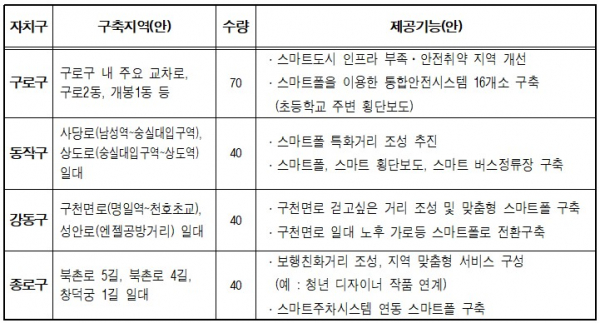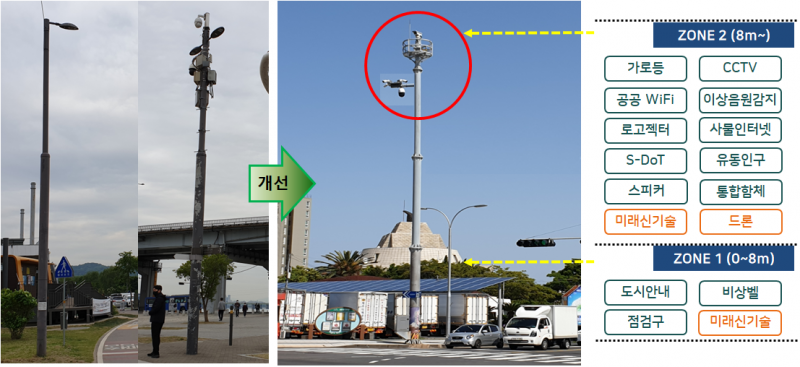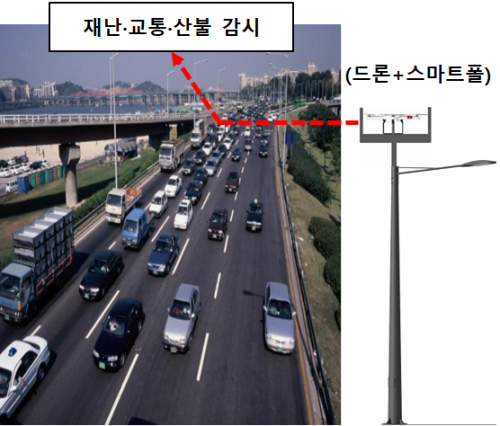– Completed installation of 4 smart poles in 190 districts by the end of this year based on institutionalization of standard model and construction operation guidelines
– Considering the characteristics of the place in the Han River Park, a'improved standard model' equipped with CCTV was prepared and installed at the end of the year
-In the second half of the year, a pilot project of'Smart Pole function enhancement' equipped with electric vehicle charging function and drone station
– Inquiries and due diligence from over 30 local governments nationwide… Online information session held on the 21st to support national spread
□ The city of Seoul will expand the smart city infrastructure'Smart Pole', which integrates road facilities such as streetlights and traffic lights, and combines ICT technologies such as intelligent CCTV, public WiFi, and IoT sensors throughout the city. By the end of this year, additional 4 smart poles will be installed in 190 autonomous districts.
□ The Seoul Metropolitan Government installed 2 smart poles for the first time in February this year in six major places visited by citizens, such as Seoul Plaza, Sungnyemun Gate, and Cheonggyecheon Stream. Through this, the establishment and operation guidelines and 6 standard models are derived, institutionalized, and spread in earnest.
□ The 190 autonomous districts where 4 smart poles are newly installed are ▴Guro-gu ▴ Dongjak-gu ▴Gangdong-gu ▴Jongno-gu.
□ Guro-gu and Dongjak-gu are autonomous districts selected by applying for the Ministry of Land, Infrastructure, and Transport “Smart City Solution Expansion Project in 2021” and receive government funding. Some fertilization and equipment are also used.
○ The solution diffusion project is a project that supports government funding to spread the project with proven effectiveness and excellence by MOLIT to the whole country. It was selected based on the effectiveness and excellence of the smart pole installed by Seoul as a pilot project.
○ Guro-gu: A total of 70 copies will be installed. Streetlight smart poles that combine CCTV, public Wi-Fi, and IoT technology, LoRa (Long Range), are installed on major roads and intersections to enhance citizen safety and convenience. CCTV smart poles will be installed in alleys such as Guro 2-dong and Gaebong 1-dong to provide safe alley services.
○ Dongjak-gu: In the area of Sangdo-ro and Sadang-ro, 40 smart poles combined with CCTV, public WiFi, and S-DoT and a smart crosswalk will be built. It is planning to improve urban aesthetics and establish a safe distance to prevent traffic accidents.
□ Gangdong-gu and Jongno-gu are self-governing districts that can reduce costs and increase effectiveness through the establishment of smart poles as they are promoting road maintenance projects that change the old urban infrastructure. One billion each, a total of 10 billion won, will be invested in full fertilization.
○ Gangdong-gu: By converting old road facilities in Gucheonmyeon-ro and Seongan-ro into 40 smart poles that combine various smart functions, the effect of the walking street creation project promoted in Gangdong-gu is enhanced.
○ Jongno-gu: In the Bukchon area, 40 smart poles will be built that combine not only CCTV and public WiFi, but also smart parking functions and works by young designers. By creating a pedestrian-friendly street, it provides a variety of services for citizens to experience.
□ The city plans to provide it as a'Street Lab' so that private companies can demonstrate new technologies and products when the construction of 190 additional smart poles is completed. As it is built in various road environments such as roads, alleys, and promenades, it is expected to be used in various fields, including analysis and improvement of commercial districts, traffic, and urban phenomena.
<Promotion of installation of'customized smart pole' with CCTV in Hangang Park,'advancing business' for electric vehicle charging, drones, etc.>
□ Seoul City is promoting the installation of customized smart poles equipped with CCTVs in Hangang Park. The plan is to prepare an improved standard model in the second half of the year and install it at the end of the year. The goal is to increase the safety of citizens while minimizing flood damage in consideration of the characteristics of places where flooding may occur during the summer rainy season.
□ For example, when an abnormal sound source is detected, it is equipped with a'abnormal sound source recognition-based CCTV' that shoots the sound direction to speed up the crisis response. When an abnormal situation occurs, a'intelligent warning light' function can be added to notify the surrounding people of a dangerous situation and receive immediate help, like a siren of a police car sounds. As it is a space where many citizens gather, public Wi-Fi can also be installed.
Status Han River Park Customized Smart Pole (Plan)
□ In addition, in the second half of the year, in line with the increasing demand for eco-friendly vehicles, a pilot project of'advancing smart pole functions' equipped with electric vehicle charging functions or drone stations will be promoted. It is expected to seek solutions to the problem of shortage of charging stations and lay the foundation for a transition to an eco-friendly city. Through the drone station mounted on the top, the possibility of using drones for disaster monitoring and lifesaving is reviewed.
Smart pole + electric vehicle charging (example) Smart pole + drone (example)
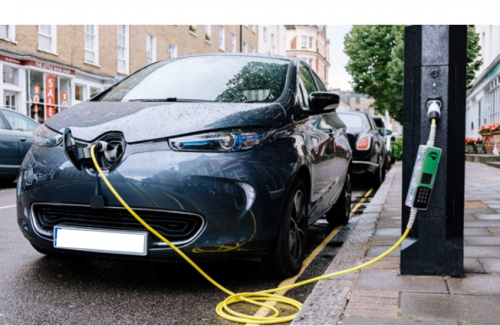
□ After the Seoul City completed the smart pole pilot construction and announced the construction operation guidelines, inquiries and due diligence on construction have been continued from about 30 local governments across the country. Accordingly, the city held an online briefing on Friday on the 21st to introduce the standard model of smart poles and construction and operation plans to support the spread of smart poles across the country. Standardization cooperation plans are also discussed.
○ Online briefing sessions are held for local governments across the country who have continuously inquired about the city's affiliated offices and smart pole projects. The city explained that it was possible to confirm the growth potential of Smapol as a future smart city infrastructure through inquiries from various local governments.
□ The Seoul Metropolitan Government completed the establishment of a smart pole standard model and construction and operation guidelines this month (May) with the goal of evolving road facilities such as street lights and traffic lights widely installed throughout the city into smart city infrastructure. It laid the foundation to systematically spread and build smart poles throughout the city.
○ A total of six guidelines, including smart pole construction and operation guidelines and construction guidelines for each standard model, were made to explain in detail the plans for smart pole construction and maintenance.
□ In the construction and operation guidelines, the standards for effectively integrating road facilities and systematically expanding and installing them throughout the city are specified to improve urban aesthetics and pedestrian convenience, and provide flexible smart functional facility plans.
○ Conduct a preliminary on-site survey from the planning stage of the smart pole installation to induce the construction of a single smart pole in which the functions of each facility are integrated if there are road facilities that can be integrated.
○ The facility structure safety review was conducted for each smart pole standard model (traffic light, street light, CCTV, security light, smart pole), and the facility standards for the safe construction of smart poles and the acceptance criteria for smart devices were specified.
○ The acceptance criteria for smart devices are used as criteria for adding new or easily replacing smart functions according to changes in construction site conditions, and acceptance criteria for new future technologies that are constantly emerging.
○ In addition, providing customized information based on object recognition, S-DoT S-DoT (Smart Seoul Data of Things) is an IoT city data sensor installed to establish a data-based smart city policy by checking various urban phenomena. It is a self-manufactured composite sensor when collecting 17 kinds of fine dust, noise, illuminance, temperature, humidity, ultraviolet rays, vibration, wind direction, wind speed, number of visitors, carbon monoxide, sulfur dioxide, nitrogen dioxide, ammonia, hydrogen sulfide, ozone, and black bulb temperature.
(17 types of IoT sensors) based urban phenomena analysis, city guide QR, etc.
○ In the guidelines, the next generation intelligent transportation system (C-ITS) in Seoul and a smart pole model combined with a 5G repeater were also included, laying the groundwork for linking autonomous driving and mobile communication functions in the future.
□ In addition, through the smart pole pilot project, we also confirmed the effect of installation, such as ▴improving urban aesthetics through the integration of various facilities ▴reducing replacement costs through the use of road facilities that have reached the time of replacement ▴securing facility safety.
○ In the pilot project promoted in '20, the traffic lights, street lights, and CCTV posts that were installed in a narrow area in front of Seongdong-gu Office and Seongdong-gu Youth Street were integrated into a single smart pole for traffic lights. As a result of analyzing the installation cost, it was possible to confirm the result of cost reduction of about 12~21% despite the fact that there are factors that increase the cost, such as adding smart functions and increasing labor costs.
Before installation After installation (in front of Seongdong-gu Office)
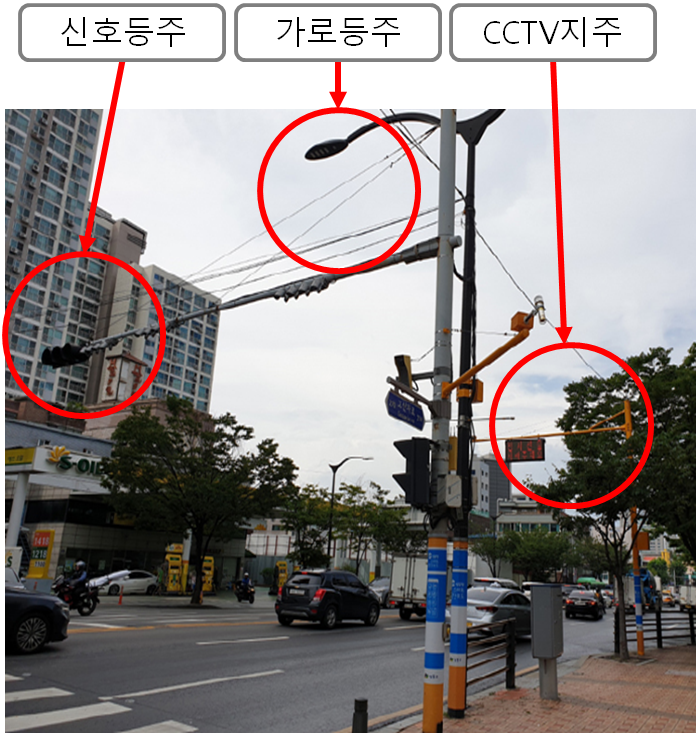
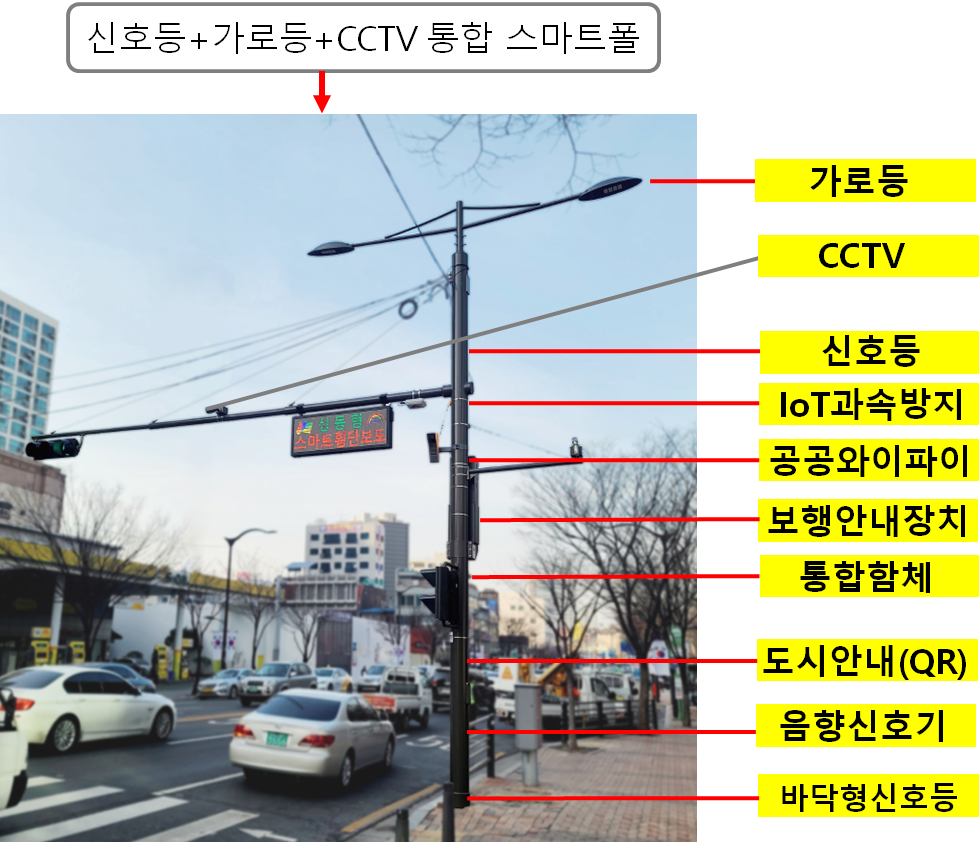
□ Lee Won-mok, Seoul's Smart City Policy Officer, said, “The Seoul Smart Pole is a core infrastructure facility of a smart city that can improve urban aesthetics and citizen safety and convenience while reducing construction costs. The standardized smart pole model and the institutionalization of construction and operation guidelines laid the foundation for the expansion of standardized smart poles throughout the city. In the second half of this year, we will create smarter urban infrastructure by developing new functions required for smart cities such as electric vehicle charging and drones.”




